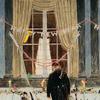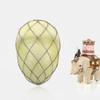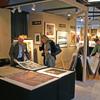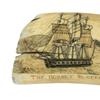Hollywood in Havana: Five Decades of Cuban Posters Promoting U.S. Films
- PASADENA, California
- /
- April 18, 2017
Hollywood in Havana: Five Decades of Cuban Posters Promoting U.S. Films, on view at the Pasadena Museum of California Art (PMCA) August 20, 2017–January 7, 2018, assembles approximately 40 Cuban posters publicizing Hollywood films from the 1960s to 2009. Astonishing in their design, stylistic diversity, and artistic skill, these bold and vibrant posters helped create visual literacy among the Cuban population in the decades following the Cuban Revolution. The screenprints go beyond the glossy and celebrity-filled film posters that are ubiquitous in Los Angeles today and reawaken viewers to the nuanced visual signs that inform and shape their worldviews.
Produced by the Instituto Cubano del Arte e Industria Cinematográficos (ICAIC) or the Cuban Institute of Cinematographic Art and Industry, the posters were part of an initiative of the revolutionary government to develop cultural awareness and consciousness after Fidel Castro and the guerrilla forces overthrew the dictatorship of Fulgenico Batista in 1959. Today, the posters stand independent of the films they represent. Their magnetism and innovative use of design elements continue to spark conversation and understanding about the role of film, culture, art, and politics in Cuba as well as California.
Poster designers working during the early years of the Revolution had few material resources and operated in an almost artisanal manner, using the silkscreen technique. While the limited resources imposed by the U.S. embargo inspired many of the design decisions, revolutionary ideals can also be cited as source material. Screenprints created for Cuban audiences to promote iconic American films, such as Modern Times, Singin’ in the Rain, Cabaret, Schindler’s List, and Silence of the Lambs, are in striking contrast to the vast majority of Hollywood posters for the same films, which formulaically feature faces of the movies’ stars. Instead, the imagery depicted often relates to an iconic element or moment in the film, such the umbrella in Singin’ in the Rain. ICAIC posters employ creativity and free expression as well as a variety of art styles, including Art Nouveau, abstraction, Pop, and Op, many of which mirror the American counter-culture of the times.
Selected from the collection of the Center for the Study of Political Graphics (CSPG), the exhibited posters showcase the range and ingenuity of Cuban screenprinters and provide audiences an opportunity to understand a complex culture from a new perspective. “Based on a shared love of films, Hollywood in Havana identifies commonalities between Cubans and Californians,” says Carol A. Wells, curator of the exhibition and Founder and Executive Director of the CSPG. “The exhibition creates a dialogue not only about these visually stunning and easily approachable posters, but also regarding longstanding stereotypes about Cuba and its government.”
During a time when momentous changes are underway for Cuban-American relations, Hollywood in Havana adds to the discourse between the two countries. Presenting Cuban film art in the film capital of the world encourages viewers to consider the power of these posters as well as the printed media and graphic designs that permeate their daily lives. The exhibition demonstrates how art, entertainment, and politics intersect and integrate to influence and reflect cross-cultural communication.



__Portrait_of_a_Young_100x100_c.jpg)










